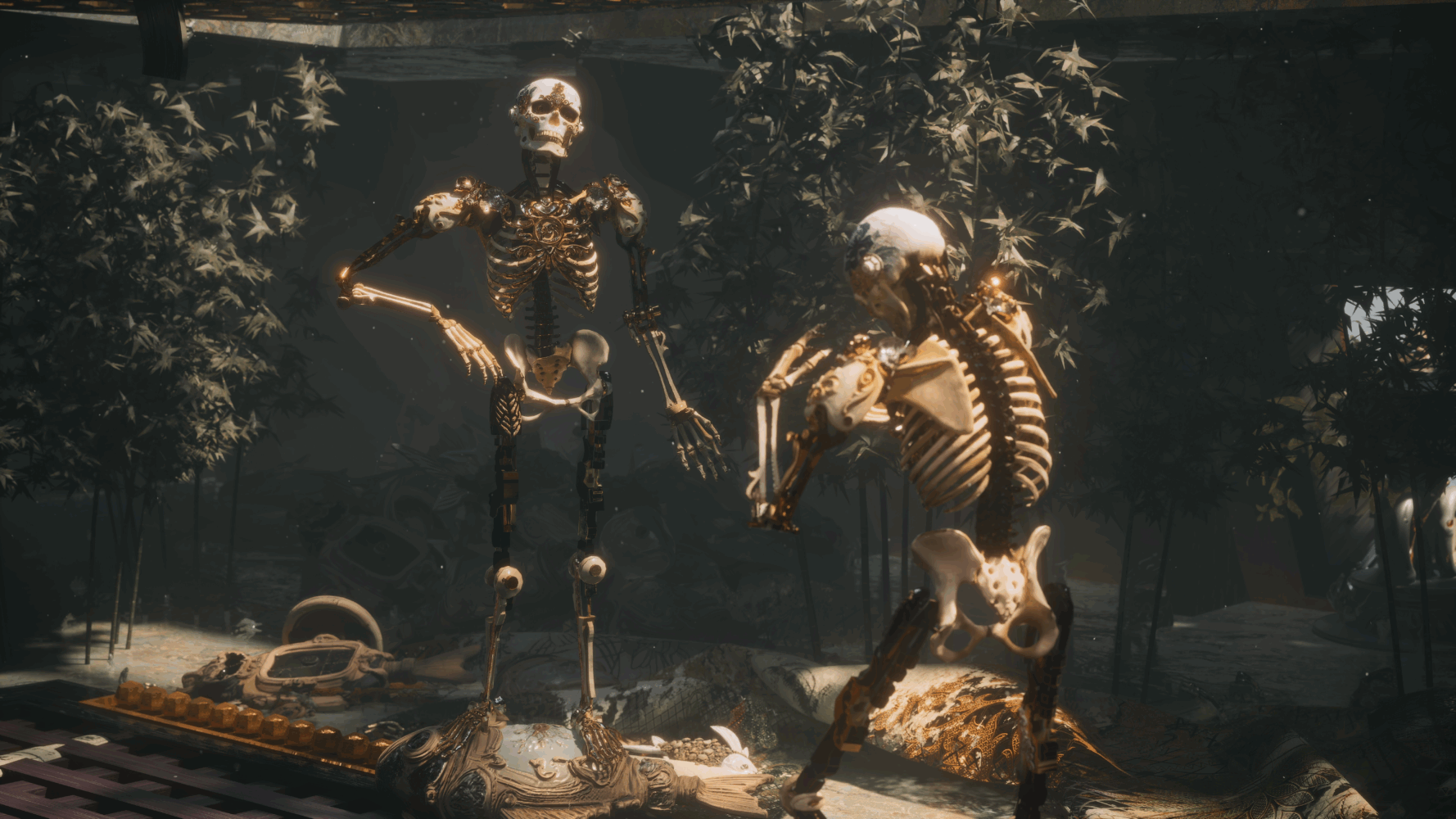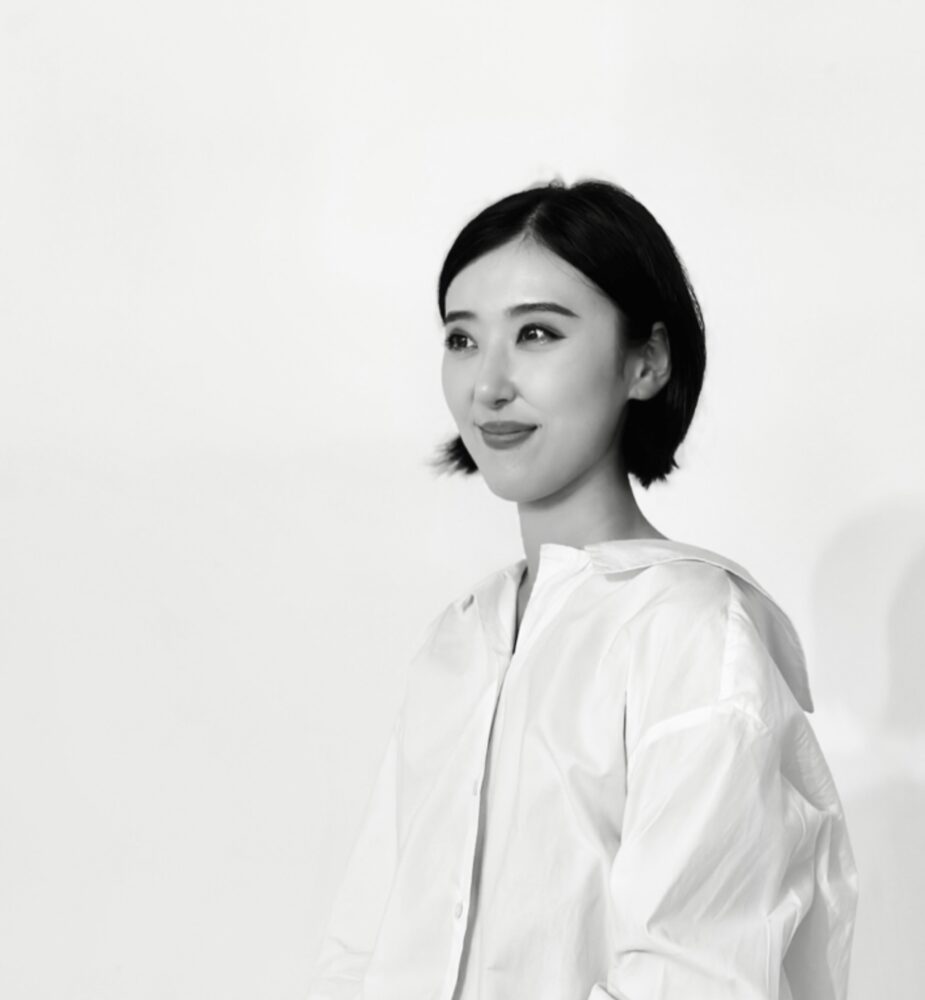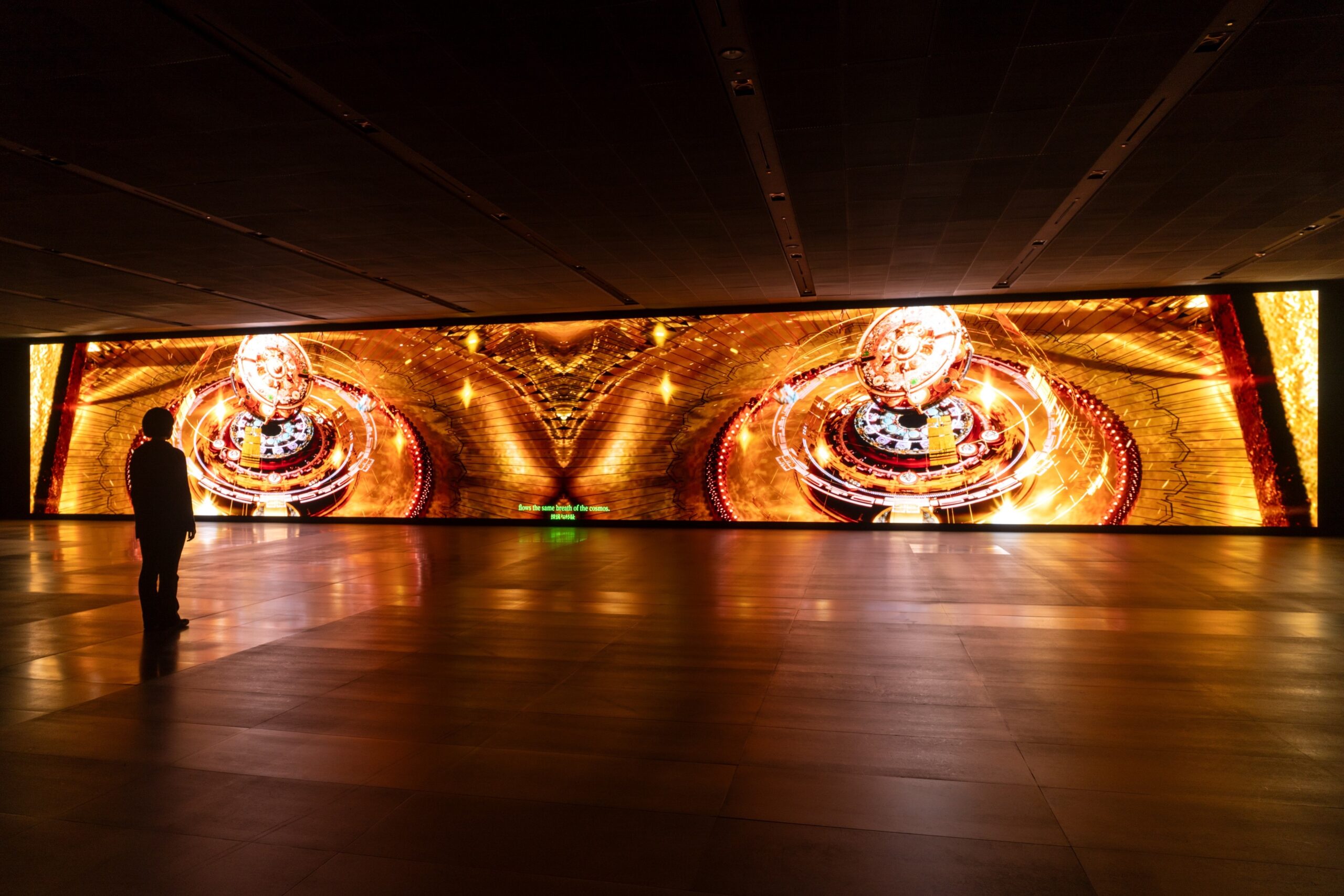Dream of Walnut Palaces weaves history, Daoist philosophy, and AI imagery into a transformative space where alternative forms of knowledge emerge.
Guest article by Son Hyerim in conversation with artist Wendi Yan.
Wendi Yan has been named the Grand Prix recipient of the 6th VH AWARD, a platform initiated by Hyundai Motor Group to support emerging media artists who engage with the context of Asia and share their experimental voices on global stages. Her CGI film commissioned by the VH AWARD, Dream of Walnut Palaces, is a dreamlike work of computer-generated imagery that reimagines knowledge exchange between Asia and Europe in the 18th century. Exploring the psyche of a fictional Daoist scholar wandering through a surreal Parisian laboratory, it reflects on the East–West encounter of epistemic visuality and proposes an alternative to techno-Orientalism. This film — oneiric yet grounded, as if a concrete dream — will be featured at the 2025 Ars Electronica Festival.
A Leap Through Time and Space in the Wake of a Strange Dream
The temporality implied by ‘dreams’ is a bit uncanny. They replay fragments of one’s past memories and float current thoughts in the screen of a dream. There’s also a mysterious temporality to them, as implied by the word lucid dreaming, where they pull from the future at the same time. Subverting the stereotypical notion of time as past-present-future, which gives the impression of being somewhat linear, the space of dreams seems to create a new narrative that blends these temporal qualities. It is an unconventional sculpture that seems to pierce into a realm still unreached by humans, and a part of the most subjective individual.
Here stands an artist who describes her speculative world as a ‘lucid dream’ and an ‘aspirational dream’. Wendi Yan’s Dream of Walnut Palaces, Grand Prix recipient of the 6th VH AWARD, invites us into a parallel world saturated with imagined histories, where past, present, and future shimmer in speculative epistemologies. Calling it an aspirational dream is no accident: while the work is set in the late eighteenth century, it unsettles any temporal distance by sparking questions that remain pressing in our present moment. Fragments of historical archives, the artist’s critical reflections, and AI-generated images pointing toward the future are intricately woven together—stirring the foundations of epistemic systems long presumed to be immutable.
Unfinished Encounters, Rewritten Epistemologies Beyond Techno-Orientalism
Wendi Yan’s film takes place in the 1780s—a period she identifies as the apex of the Enlightenment. For her, this moment in history is more than a backdrop; it’s a charged intersection where European imperial projections of Otherness came into contact with Chinese epistemic traditions—yet the possibility of mutual exchange was obscured from the start. During that time, a handful of French scholars encountered the cosmological framework embedded in Traditional Chinese Medicine (TCD). Yan, approaching this from the level of knowledge systems, captures a fleeting moment—sincere, if brief—when Eastern and Western epistemologies seemed on the verge of forming a conceptual bridge. That possibility never fully materialized. The epistemological terrain of modernity shifted forward, leaving such cross-cultural synthesis unrealized. Yet Yan doesn’t dwell on that missed potential. Instead, she revisits that historical threshold through the lens of dreaming—where unfulfilled potentials linger—and invites us into a film where multiple timelines entangle, offering space for alternative ways of knowing to resurface.
This dreamlike quality deepens as we move through the virtual world Wendi Yan has constructed, wandering, almost somnambulistically, through its surreal coordinates. The film’s narration unfolds through the voice of a fictional Daoist scholar, who, having once worked alongside Jesuit missionaries in Qing-dynasty Beijing, now reflects on his life from a speculative elsewhere: a Paris of the 1780s seen through alternative historicity. His voice, composed and retrospective, offers a tether between fantastical imagery and metaphysical inquiry. Yan’s fictional premise allows her to reimagine a moment when Daoist metaphysics might have participated in shaping new epistemic virtues within Europe. But her aim is not merely comparative. Rather, she retrieves what Enlightenment rationality had consigned to obscurity—reanimating marginalized knowledge formations, and proposing a reconfiguration of what counts as epistemically valid.

There’s a moment in the film that quietly reveals how Wendi Yan weaves together fragments of history with digital speculation. In the first walnut—an entry point to a spatial motif that recurs—she imagined a ship, not empty, but densely packed with delicate, mechanical figures. This imagery wasn’t invented out of nowhere. It draws on Qing-dynasty glassware, images she pulled from archival research, which she then fed into an AI image model like Flux. What came out weren’t simple replicas but strange hybrids—machines that look like they might have once been diplomatic gifts or maybe dreams of such things. The scene feels both ornate and oddly distorted: part imperial pageantry, part surreal hallucination.
“With Dream of Walnut Palaces, I certainly hope to avoid falling into the mire of purecriticism or destruction, but have poked fun at the standard narratives we’ve had about how the modern world came to be, and gestured towards an aesthetic and philosophical imagination of a world we haven’t seen. Dream of Walnut Palaces was a narrative engineering project for me.”
What, then, are the shadows cast by the Enlightenment—the spectral remnants displaced in the consolidation of modern technoscientific knowledge? For Wendi Yan, they open up modes of understanding that resist quantification: what she names “correlational thinking and embodied knowledge.” How do we explain what remains intangible—what escapes the reach of medical imaging or reductive metrics? Beginning with the elusive concept of qi (氣), Yan draws attention to epistemologies grounded in cosmological thinking, such as those found in Traditional Chinese Medicine (TCM). TCM may not follow the same visual logic as biomedical science, but it’s still practiced widely and deeply rooted in many people’s cultural and bodily experiences as a form of “alternative medicine.” Through this, Yan reminds us that the norms of scientific knowledge are relatively recent constructs. Her work asks what forms of understanding were lost in the modernization, professionalization, and standardization of science—and whether we might still retrieve them. “Could a different modernity of knowledge-making have been possible?” Yan asks.
Grasping the Ungraspable

Philosopher Yuk Hui suggests that facing the technoscientific condition of modernity isn’t just a matter of coming up with new narratives. It also means shifting the axis of time itself, and revisiting metaphysical concepts like qi and dao, which might offer different ways of understanding technology today. These categories, deeply embedded in Asian cosmology, offer alternative epistemological architectures through which contemporary questions of technology might be reimagined. In this light, Wendi Yan’s Dream of Walnut Palaces responds with critical acuity. Describing her work as a “narrative engineering project,” she stages an encounter between incommensurable ways of knowing. That encounter does not resolve into harmony; rather, it operates as a mirror system, reflecting back the very contours of what we take for granted as knowledge.
What cracks might we begin to open in the epistemic architecture of the world we’ve long taken for granted—and how might we learn to reassemble it otherwise? Trying to express immaterial sensibilities—especially the correlative relationship between the human body and the cosmos, which remains unresolved across East and West—is no easy task. Rather than offering definitive forms, Wendi Yan installs a sensibility: what she has described as a sense of “porosity” between flesh and the universe. Her work does not reject machine-informed visual language; instead, it animates a subtle hydraulic mode throughout the film. Concepts such as qi, yin-yang (陰陽) theory, and Daoist cosmology—which resist capture by modern instruments of visualization—are rendered with poetic nuance through her fluent use of 3D modeling, AI generation, and the projective capacities of Unreal Engine. The resulting images linger between the eerie and the familiar, yet they do not dissolve into abstraction. Instead, they coalesce into something with epistemic contours—a palpable specificity that enables viewers to glimpse, however briefly, the outlines of an alternative order of knowing.
“To be honest, AI doesn’t give me the most interesting ideas even when I use it for brainstorming, when I don’t have a clear understanding of my position. Perhaps my definition of “interesting” is different. I think AI can produce infinite images that are substantially creative, but for something to be truly surprising and interesting, the image or idea needs more granularity and specificity than AI tools tend to make. With today’s AI tools, this granularity must come from the prompts, so I need to know my story world before letting AI take over.”
The singularity of Yan’s narrative arises not only from the speculative richness of her medium, but from her nuanced understanding of AI—both its imaginative potentials and its epistemic limits. Yan draws a clear boundary—AI was not part of her historical research or the writing of her script, both of which she considers grounded in personal reflection and direct engagement with archival materials. These stages, she holds firmly, belong to realms of knowledge that cannot be outsourced to computation—fragments of the past that must be touched, witnessed, or intuited through non-coded experience. While she embraces AI’s capacity to generate aesthetic surprise, she maintains that the directionality—the moral and conceptual compass of the work—must remain human. For Yan, what makes real dialogue meaningful is its unpredictability—the way it allows for unexpected insight or even disagreement. That’s something today’s AI can’t truly offer.
Sound, for Yan, becomes another register through which to approach the intangible and untranslatable. Working closely with composer and sound designer Dasychira, she infused the film’s sonic dimension with rich textures that extend the narration beyond what visuals alone can deliver. Just as her collaborator manipulated soundscapes within Ableton—a digital audio workstation—to evoke energies that defy representation, Yan employs AI with similar intent. Once the research and story structure are in place, Yan starts using AI—not to write the narrative, but to play with images. She follows where it leads, especially when the results feel unexpected or surreal, while keeping her own voice present in how everything comes together. She does not claim visual superiority over the machine; instead, she allows the virtual environment to lead her in unexpected ways, moving through her 3D worlds as though uncovering embedded details already latent within them. This approach reveals an attuned sensibility: rather than surrendering control, Yan is orchestrating a dialogue—one in which AI’s eccentricities are welcomed but always held within the bounds of her own conceptual design.
Lucid Dreaming on a Tilted Axis of Reality
So how are we meant to move through this dream—this strange, creative piece that feels like it might belong to a parallel world? Yan invites us to tune in to the voice of the Daoist scholar, gently unfolding his thoughts, while approaching the visuals with less tension—more like drifting than analyzing. She asks us to give our pattern-seeking minds a moment to rest, to let the edges blur a little. And in that quiet suspension, something begins to happen: the story on screen starts to brush up against our own sense of reality, as if we were dreaming with our eyes open.
Alongside Grand Prix recipient Wendi Yan, the 6th VH AWARD features four other finalists: Lêna Bùi with dream(machine, human), drifts through a non-linear collage that can be either read as machine-salvaged human memories or a mythology of human demise and metamorphosis. Tianyi Sun & Fiel Guhit’s 40 Epochs traces the invisible labor behind AI voice models, revealing how diasporic memory and identity become flattened into data—raising the question of who gets to speak, and who is synthesized. HUDA x MUNGOMERY’s Within Tirta reimagines the legend of Princess Mandalika to reflect on ecological urgency. Shot on rare 35mm VistaVision film, the work explores how digital awe both severs and potentially restores our ties to nature. Inhwa Yeom with War Dance examines Asian women’s entanglement between production and reproduction, love and care, drawing from Korean mythology and natural phenomena.
The “Dream of Walnut Palaces” project will be presented during the Ars Electronica Festival in Deep Space 8K. On Saturday, September 4, visitors will have the opportunity to meet the artist in person as part of “Meet the Artist: Wendi Yan.” The detailed festival program will be available here in mid-August.

Son Hyerim
Son Hyerim is a researcher and curator interested in micro-histories surrounding media environments and the critical or sensorial expansion of perception. Her practice investigates how exhibitions can operate as connective and transformative media—dislocating and recomposing relationships between technological systems and embodied experience. Son holds a Bachelor’s degree in Media Studies and earned her Master of Arts from the University of Leeds (UK), where she developed a curatorial sensibility grounded in cross-disciplinary thinking—navigating between media theory, cultural production, and experimental art practice. At the National Museum of Modern and Contemporary Art, Korea (MMCA), she has contributed to exhibitions centering on photography and new media. She is also actively involved in international exchange projects, where she explores the potential of exhibition formats as sites for translocal dialogue and curatorial experimentation. She also engages in art writing and criticism, and in 2024, was selected for Pitching, a program recognizing emerging contemporary art critics
